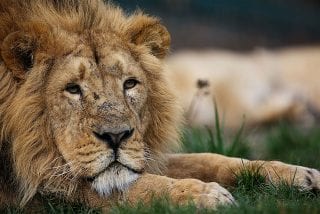Fun facts
The lion sleeps tonight
Asian lions spend up to 20 hours a day resting or sleeping.
Mane
The male lion is the only cat that has a mane. Asian lions have shorter, darker manes than African lions. The lion’s mane is an indication of its maturity and dominance.
Hear me roar
The lion has the loudest roar of all the big cats. It can be heard up to eight kilometres away.



